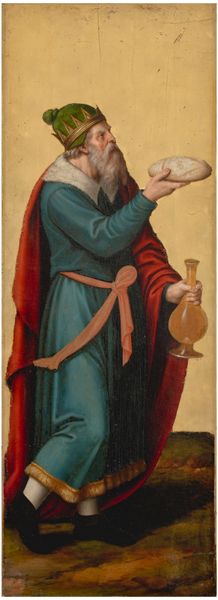
panel, tempera, painting
#
portrait
#
panel
#
tempera
#
painting
#
figuration
#
oil painting
#
international-gothic
#
early-renaissance
Copyright: Public domain
Saint Lucy was painted by Álvaro Pires de Évora in the 15th century, using tempera on a wood panel. The application of thin, translucent glazes over a gesso ground gives the painting a luminous quality. Notice the delicate modeling of Saint Lucy’s face, achieved through subtle brushwork, and the use of gold leaf to create a halo around her head. This was a labor-intensive process, requiring specialized knowledge and skill. Tempera painting was common in the early Renaissance, a time when artists often relied on workshops to produce their work, combining art with craft. The techniques used to make paintings such as this demanded a high degree of technical knowledge, and the artist would have served a long apprenticeship to master them. In its time, this image served both a devotional and social function, reflecting the labor of its making, and the values of the community in which it was created. Focusing on the process and materials allows us to appreciate the full complexity and richness of this artwork, revealing the close relationship between art and craft.
Comments
No comments
Be the first to comment and join the conversation on the ultimate creative platform.













